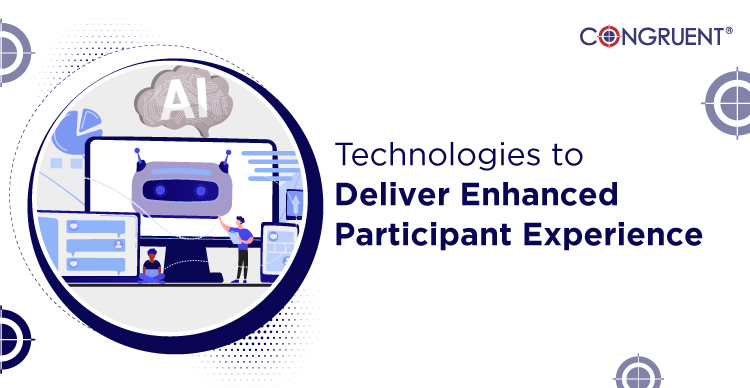
When it comes to retirement planning, there are three Ls that plan participants seek – lifelong income, a legacy plan, and liquidity.
Now, there are several permutations and combinations to achieve this. And since today’s empowered consumers (they’re not passive savers any more) want tailor-made solutions, planning can be time-consuming. However, participants want personalized attention and solutions, and they want them fast.
As Ronak Doshi of Everest Group said at the recently held Congruent Webinar Series on The Future of Participant Experience Innovation in the US Retirement Industry, “For a lot of the retirees, they would expect you to have their data and be able to give them at that stage of life event, better advice, services around wealth planning services, better ongoing communications so that they can better manage their retired lifestyles.”
That’s why retirement plan service providers who have leveraged technological advancement, including AI and Big Data, will be the only ones who can provide a more streamlined and personalized participant experience.
So, what are some of the key technologies that will help enhance participant engagement?
1. AI
According to an Advisor Authority special report, 66% of Registered Investment Advisors (RIAs) and fee-based advisors and 94% of early adopters who use AI in their practice say that AI will give them and their firm a competitive advantage.
Integrating AI into customer relationship management systems will help you capture and leverage extensive customer data, which can then be used for predictive analytics to fuel proactive marketing strategies. AI can also monitor market conditions and portfolio performance, automatically adjusting to align with the retirement Ls.
While sharing his thoughts, Jason Lenardson from Lincoln Financial Group said, “How can we use AI to analyze the documentation differently or to do even more self–servicing and self-healing of data coming in that allows us to provide more capabilities. How can we learn more about you without exposing more about you? I think that there’s lots of things coming that will come out of AI.”
2. Automation
Streamlining backend operations with automation can help minimize hours expended in manual labor. Those resources can be redirected toward better participant engagement, which will increase conversion rates in the long run (auto-enrolment software, for example, is possible). Several providers use natural language processing to assimilate data and deliver tailor-made solutions.
Again, as Jason Lenardson said, “We’re doing more and more automation and more and more capabilities consistent across all audiences in the name of what’s best for the participant. A call shouldn’t take 15 minutes. When a call can take three minutes because everybody has the same information at their fingertips, for example.”
3. Virtual assistants
Robo-advisors, chatbots, and algorithm-based technologies can educate participants anytime from the comfort of their homes. As Ronak Doshi says, “You have to have any time, anywhere, any device, any channel, access to information, access to these services”. Robo advisors can help with that kind of “self-service” by predicting and analyzing the kind of contributions participants need to make and keep them on their L path.
Chatbots can also provide instant responses to client inquiries and offer basic financial advice, saving the provider and participant time. Participants are used to doing everything on their phones – they are used to ‘omnichannel’ tools and retirement planning ought to be able to transition to that.
4. Blockchain
In an age of increasing cybersecurity threats, ensuring the security and privacy of client data is vital. Blockchain technology can enhance security and transparency, keeping client information tamper-proof. You can, for example, encrypt messaging platforms and secure document sharing so client-advisor communication remains confidential and protected.
Ronak Doshi shared, “When I look at the mid-career working professionals and young working professionals retirees, many are looking at a hybrid trust. They need trust across channels. They’re asking for more transparency in the policy documents. They want more control, they want more awareness.”
5. Security & Authentication technologies
As the retirement industry becomes increasingly technologically sophisticated, the security of sensitive data is vital.
Sagar Shankaranarayanan from Congruent Solutions shared his insights on the subject of security at the same webinar, “MFA (multi-factor authentication) has been around for quite some time, but then I’m seeing an increased use of MFA with biometrics or voice-based authentication. A lot of AI tools around anti-money laundering detect anomalous behaviors in real time and put a check on those transactions. And then, of course, there’s cloud security.”
Embracing technology in retirement planning is no longer an option but a strategic necessity to deliver a modern, enhanced customer experience. These technologies allow plan providers to offer personalized, data-driven, real-time, and engaging strategies and support. Congruent’s CORE solutions can help you harness technology to deliver a better customer experience. Contact us today.
